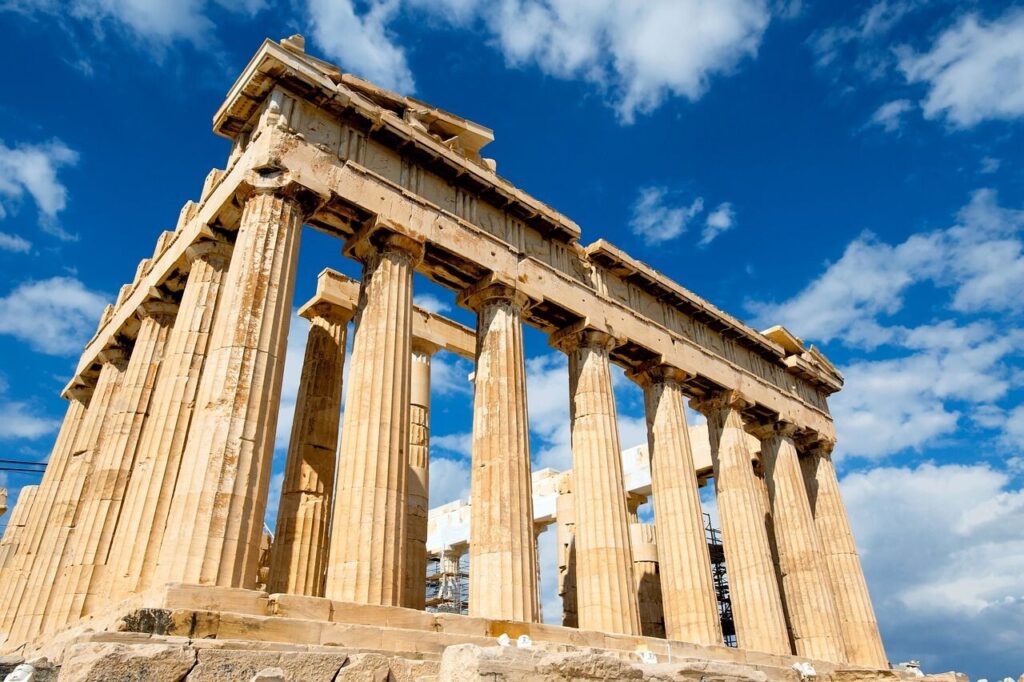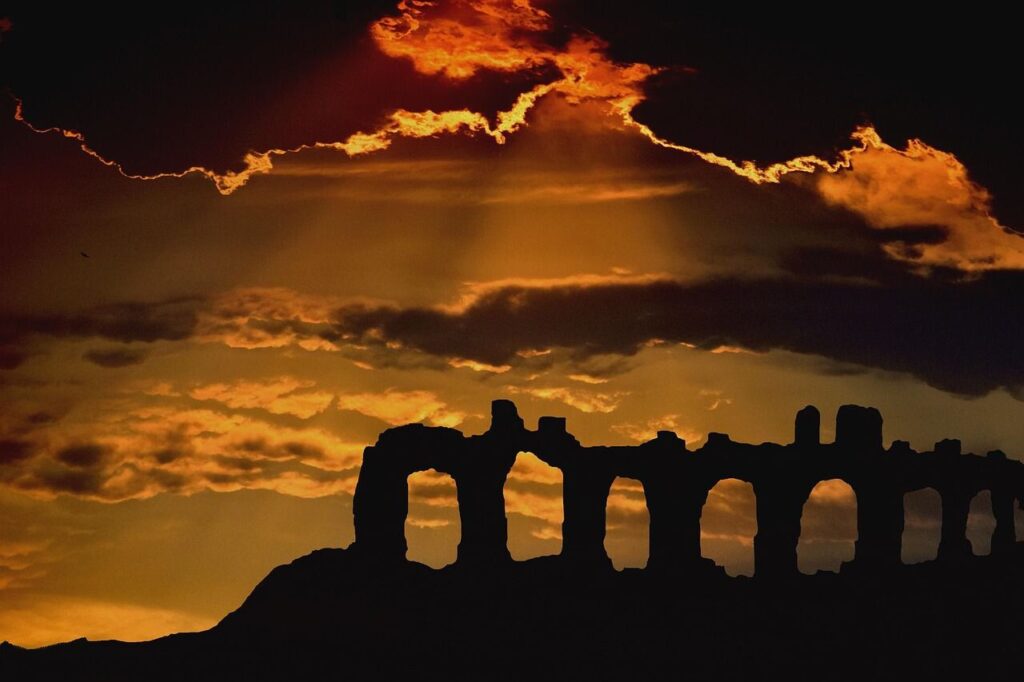Did you know that in Europe we also have destinations to live your international volunteer experience?
You can find us in Croatia, Spain, Italy, Portugal, and Greece.
Today we are talking about Greece, a destination where you can participate in projects such as marine conservation, animal care, migrant and refugee support, or community programs.
This destination in southeastern Europe is a country with numerous tourist, cultural, and natural attractions, and it is home to one of the most iconic monuments in the world.
The Parthenon.
So if you travel to Greece, we recommend visiting it in your free time, as it is a must-see in the country. Today, we will tell you a bit more about this place, which welcomes thousands of visitors every year.

The Greek Parthenon refers to the group of gods worshipped in Ancient Greece and its evolution throughout history. Greek mythology was fundamental in the culture, religion, and society of the Hellenes, later influencing the Romans and Western civilization.
What is Greek mythology?
It emerged from ancient oral traditions passed down from generation to generation. Its roots can be found in the Indo-European peoples who migrated to Greece around 2000 B.C. and in the influences of older civilizations such as the Minoan (Crete) and Mycenaean (mainland Greece).
The first accounts of the Greek gods appear in the works of Homer (8th century B.C.), such as the Iliad and the Odyssey, and in Hesiod’s Theogony, which explains the origin of the cosmos and the genealogy of the gods.
According to Greek mythology, in the beginning, there was ‘Chaos,’ a primordial entity from which the first deities emerged:
– Gaia (Earth)
– Uranus (Sky)
– Tartarus (Underworld)
– Eros (Love)
From the union of Gaia and Uranus, the Titans were born, among them Cronus, who overthrew his father and ruled the universe.
Cronus, fearing that his children would dethrone him, devoured them at birth. However, his wife Rhea managed to save Zeus, who, once grown, defeated him with the help of his siblings. This war, called the Titanomachy, led to the overthrow of Cronus and the establishment of the Olympian gods on Mount Olympus.
The Greek gods were anthropomorphic representations with human emotions. They lived on Mount Olympus and ruled over different aspects of life and nature.
Among the Twelve Olympian Gods, the most important were:
– Zeus (king of the gods, god of the sky and thunder).
– Hera (wife of Zeus, goddess of marriage).
– Poseidon (god of the sea and earthquakes).
– Athena (goddess of wisdom and strategic warfare).
– Apollo (god of light, music, and prophecy).
– Artemis (goddess of hunting and the moon).
– Ares (god of war).
– Aphrodite (goddess of love and beauty).
– Hermes (messenger of the gods, protector of travelers and merchants).
– Hephaestus (god of fire and blacksmithing).
– Demeter (goddess of agriculture and fertility).
– Hestia or Dionysus (goddess of the hearth or god of wine and festivity).
Besides the Olympian gods, there were many minor gods, heroes, and mythological creatures.

Once the importance of mythology was established, the Greeks built temples dedicated to their gods in all their cities. The Parthenon in Athens is one of the most famous, dedicated to Athena. Other notable temples include the Temple of Zeus in Olympia and the Sanctuary of Apollo in Delphi.
Rituals were held in these temples, including animal sacrifices, festivals, and games in honor of the gods, such as the Olympic Games, which were celebrated in honor of Zeus.
This building is not specific like the one in Rome but rather represents the group of gods previously mentioned.
Located on the Acropolis of Athens, it was built in the 5th century B.C. Before the current Parthenon, there was an earlier temple, known as the Pre-Parthenon, which began construction around 490 B.C. However, it was destroyed in 480 B.C. when the Persians invaded Athens and looted the Acropolis.
After Athens’ victory in the Persian Wars, statesman Pericles promoted the reconstruction of the Acropolis. Under his leadership, architect Ictinus and project supervisor Callicrates began construction of the Parthenon in 447 B.C., completing it in 432 B.C.
The sculptor Phidias was responsible for the sculptural decoration and the monumental 12-meter statue of Athena Parthenos, made of wood, gold, and ivory, along with other sculptures such as the pediments, the Ionic frieze, and the metopes.
This construction is a perfect example of the Doric order, with influences from the Ionic order. Measuring 69.5 meters long by 30.9 meters wide, it has 8 columns on the short sides and 17 on the long sides, totaling 46 exterior columns. The material used for the construction was marble from Mount Pentelicus, and subtle optical corrections were designed to counteract visual effects, such as the curvature of the entablature and the inward inclination of the columns.
Over time, the Parthenon underwent transformations; it was a Christian church dedicated to the Virgin Mary, and for the Ottomans, it was a mosque. Today, the Parthenon is one of Greece’s main tourist attractions and a symbol of the cultural legacy of Ancient Greece.
In 2022, more than 3 million people visited it, averaging 8,200 visitors per day.
To protect the site, in September 2023, a limit of 20,000 daily visitors was implemented, along with time slot restrictions to prevent overcrowding.

If you have traveled to Greece, you may have visited it, and if you plan to travel soon, we leave you with all this information so you can fully enjoy the experience of visiting it.
GREECE AWAITS YOU.




